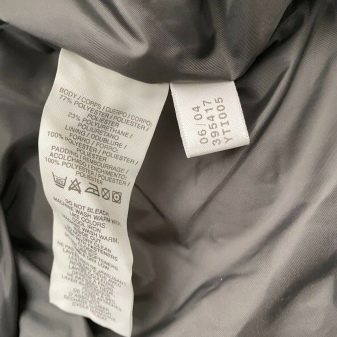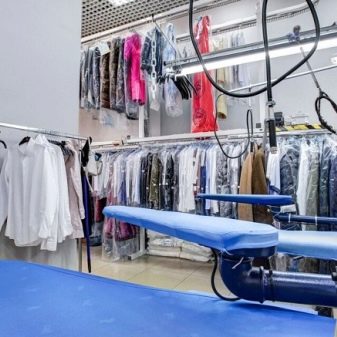Types and selection of ski jackets
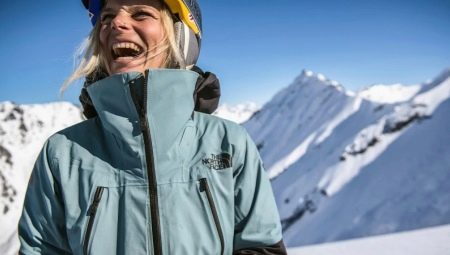
Clothing for extreme and just active pastime is always a long conversation, because too much depends on it, including the health of the owner. Of course, ski jackets are no exception. It is about them, their choice and differences from ordinary clothes that will be discussed below.
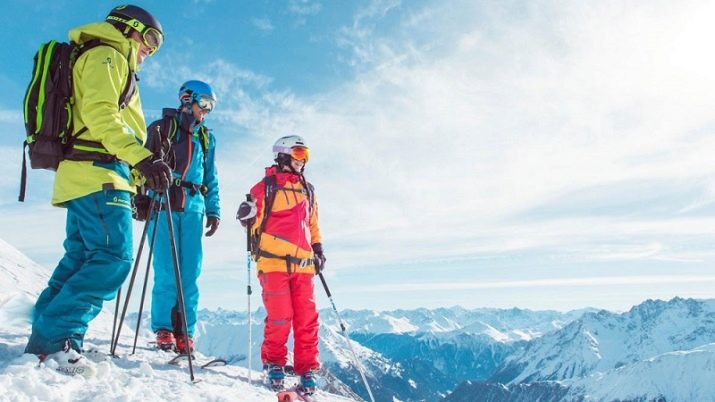
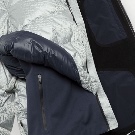
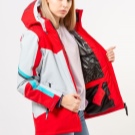
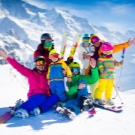
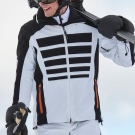
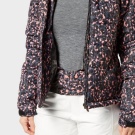
Description and purpose
Let's start with the design features of ski jackets that set them apart from everyday ones.
Outer fabric
The outer material of the jacket protects from wind, moisture, does not allow fumes to accumulate under it. The material must be durable, non-slip. At the moment, the most popular are membranes and various synthetic materials with special processing. Among the membranes, a special place is occupied by the Gore-tex family - Teflon-based fabrics from the American company W. L. Gore and Associates ”, which appeared on the market in the late 60s. "Gortex" is distinguished by its high water resistance, amounting to 23-28 thousand mm of water column. In addition, practice has shown that these membranes provide almost complete protection from the wind, "gortex" is not just so popular among the conquerors of such harsh peaks as Everest.
The fabric has good breathability: according to the RET test (Resistance of Evaporation of a Textile) - less than 13 (extremely breathable (0-6), highly breathable (6-13), breathable (13-20) fabrics). The family includes several categories of membranes with different characteristics. Another popular membrane is Japanese Dermizax. It stretches well, has a water resistance index of 20 thousand mm of water column.
Vapor permeability is provided in this model not due to holes, but due to the properties of the membrane itself.
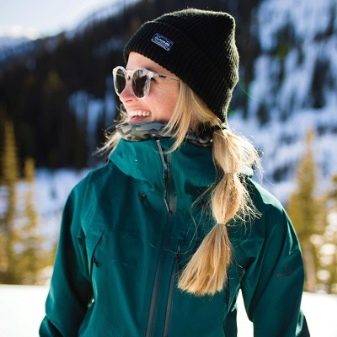
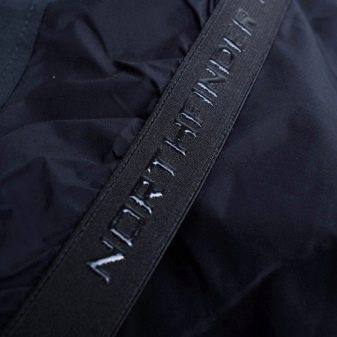
Lining
Provides warmth, comfort. In budget models, it is usually made of nylon, but it is much preferable to a model with a fleece or mesh lining.

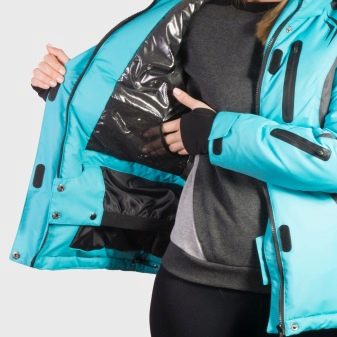
Insulation
Not available on all models. The volume of synthetic insulation is measured in grams per square meter. For skiing in the off-season, 50 - 100 g / m2 is enough, a winter jacket should already have 100 - 200 g / m2. A popular and interesting practice is to make different amounts of insulation for different segments of the jacket. Such models retain heat, do not constrain movement. Of natural fillers, duck and goose down are used in most cases. Such jackets are lightweight, retain heat well, but quickly lose all their properties when wet.
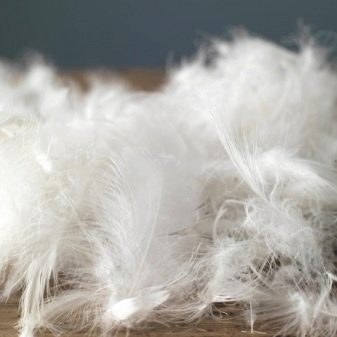
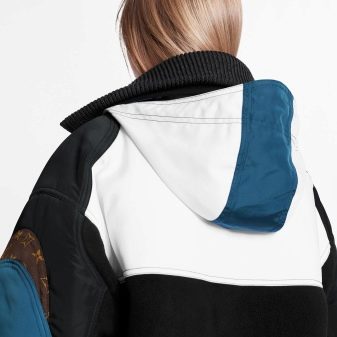
Water resistance
One of the key features of ski jackets. Yes, getting wet is also unpleasant in the city, but on a slope it can cost health, even life. Typically, quality slope jackets have a waterproof rating of at least 5000 g / m2.

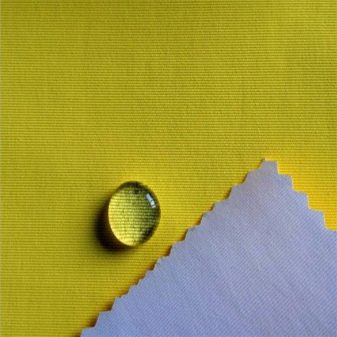
Cut
The cut of a ski jacket should be ergonomic, taking into account the specifics of the skier's movements: bent elbows, active arm movements, the likelihood of falls.
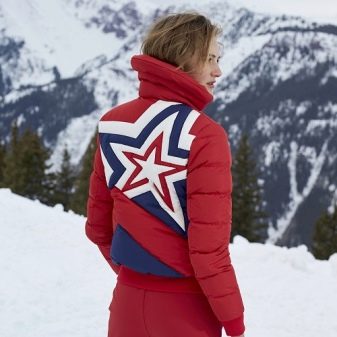
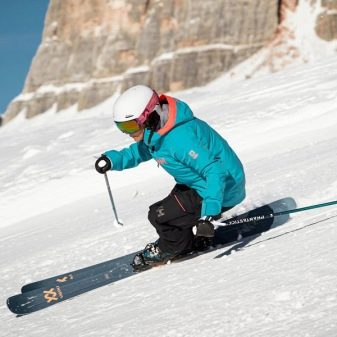
Seams
In quality models, the seams should be taped to provide additional waterproofness. Even when buying a budget option, it is better to give preference to the sample where at least the key seams are glued.
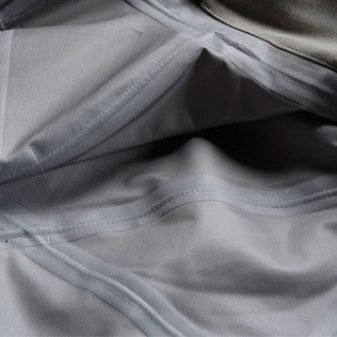
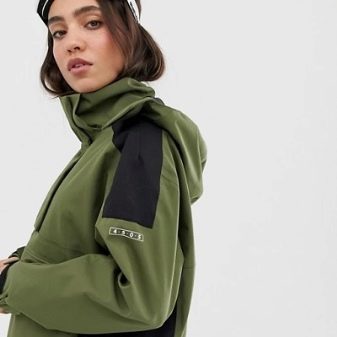
Sleeve
You can find 2 popular options: free, in which gloves are worn under the cuff, and narrow, involving wearing gloves over the sleeve of a jacket. Cuff selection is a matter of habit and convenience.
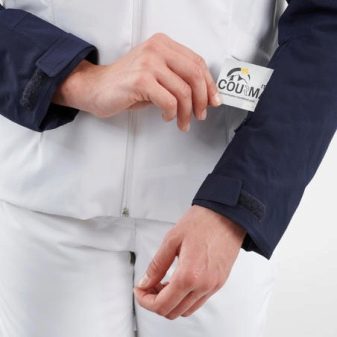
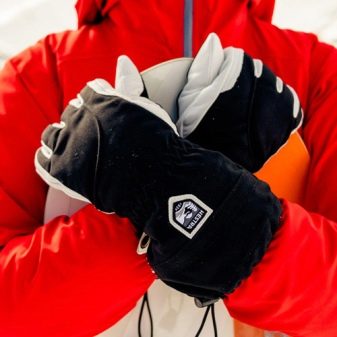
Snow protection skirt
Can be detachable. Prevents snow from falling on your back.
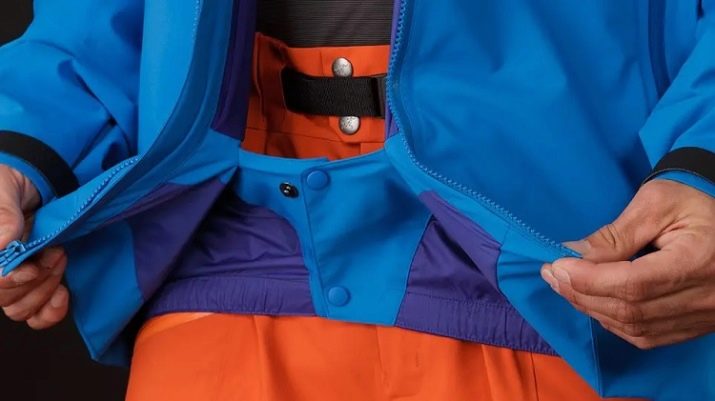
Lightning
A big plus will be the protection of the zippers from rust - this will increase the life of the jacket.
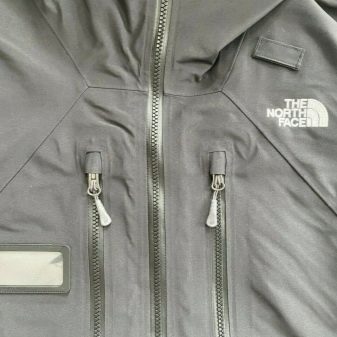
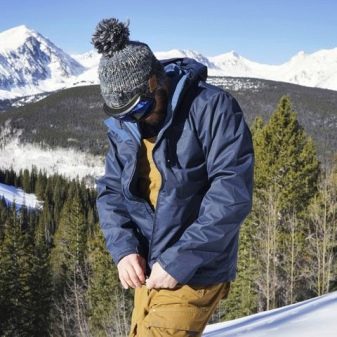
Hood
Its volume must be sufficient for use with a helmet.
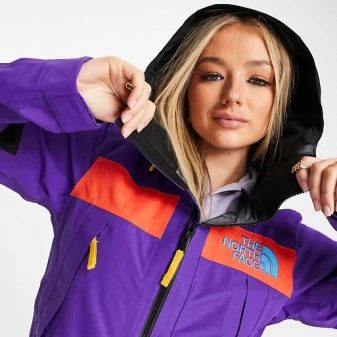
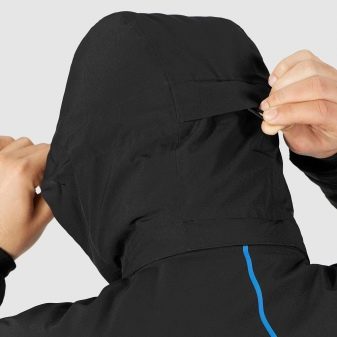
Pockets
The minimum set is 2 outdoor, 1 indoor. An interesting option may be where the inner pocket is closed with a special transparent sensor film, which allows, for example, to see the time on the phone without taking off your gloves and without taking out the gadget itself.
Protecting pockets with flaps will not be superfluous either.
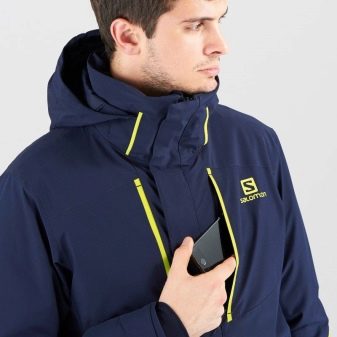

Ventilation
Not present in all models. It consists of special openings located under the armpits or in the chest area, closed with a zipper. They give the opportunity to cool down a little without unbuttoning the jacket. They can be additionally protected with a net.
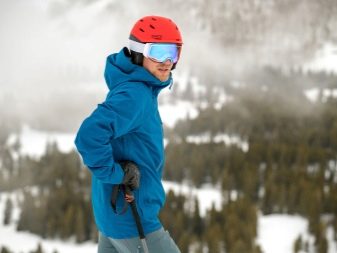
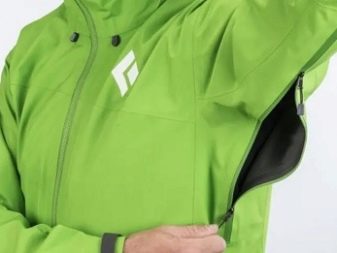
Classification
In addition to the standard division of clothing for men, women and children, ski jackets are distinguished by several more features. Let's look at these classifications. By cut type:
- tight-fitting;
- sports narrow;
- standard;
- wide.
Here the choice depends on the riding style, physique (owners of large sizes will be more comfortable with wide options) and weather conditions.
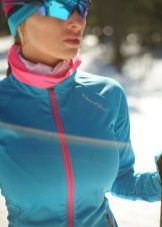
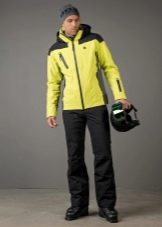

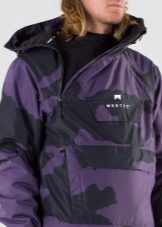
According to the material and the degree of insulation, there are 5 types.
Uninsulated (shell, hardshell)
The most common option among recreational skiers and snowboarders, suitable for skiing on suburban trails. They are versatile and have good water resistance. The issue of protection from the cold in such membrane jackets is solved by additional layers of clothing.
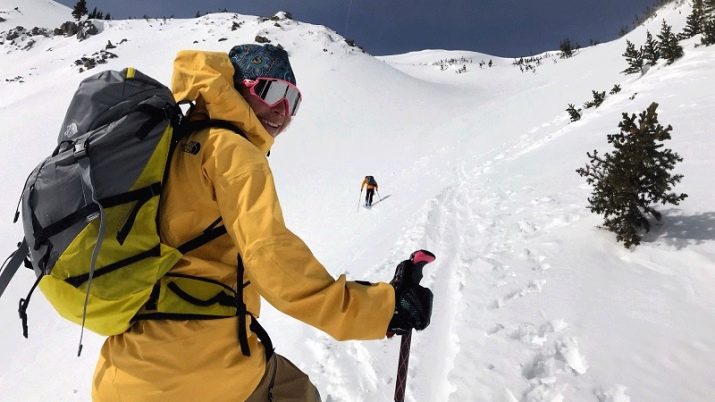
Softshell
Lightweight, stretch jackets for warm weather. Comfortable, but less resistant to wind and water.
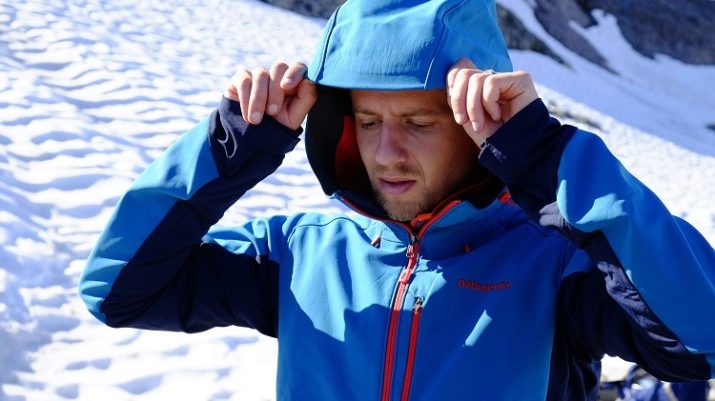
Insulated
Suitable for frequent skiing in cold weather. They can be downy and with synthetic filling. Now more and more winter sports fans prefer the second option, because it is cheaper and does not lose its properties as quickly when wet, as down.
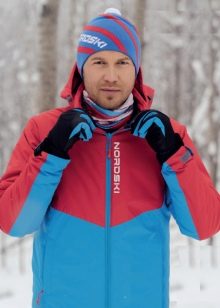
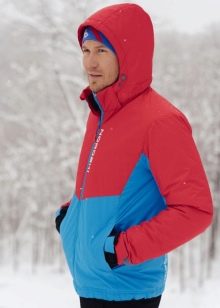
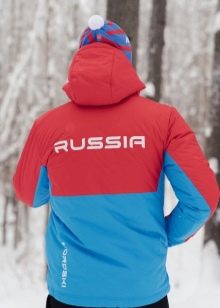
Technical
They are used during the selection of tracks, for freeride, ski tour, backcountry. Minimalistic cut of the jacket, not restricting movement, breathable, with the maximum degree of moisture protection.

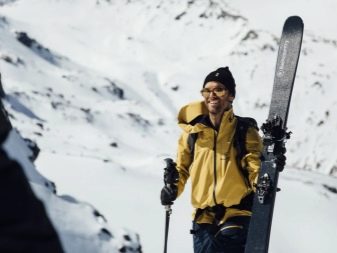
3-in-1
In fact, 2 jackets that can be worn separately or combined into one. The first is a non-insulated membrane, the second is a fleece or jacket with a filling. A universal option for riding in various climatic conditions.

According to the style of skiing and behavior on the slope, there are also 5 varieties.
Sport
The classic version for sport riding. Warm, comfortable, with a fairly high degree of protection against water ingress.

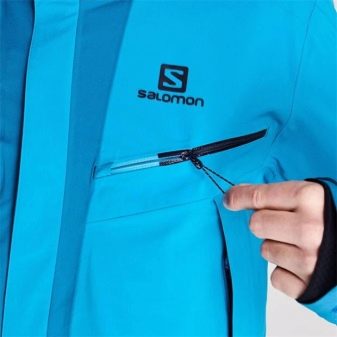
A park
Budget jackets for those who are just starting their journey along the ski slopes. Most often these are elongated models, clearly designed, judging by their appearance, for young people and adolescents.
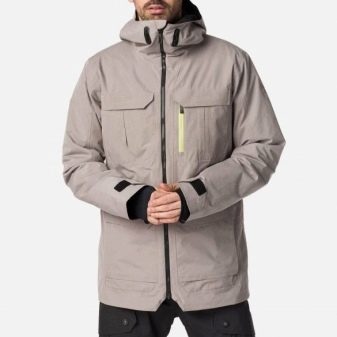
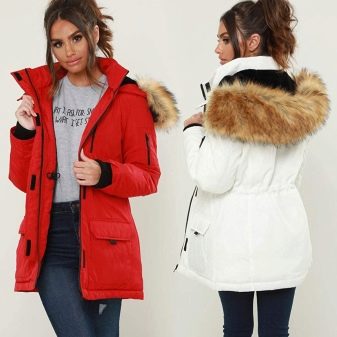
Freeride
A segment for those for whom technical characteristics are more important than design. Great attention is paid here to protection from moisture and wind, ventilation. In such jackets, everything is thought out to the smallest detail: the location of the pockets, how the straps and the belt of the backpack should lie over the jacket, the way of attaching the hood, often even a special beacon that allows you to find an extreme in an emergency. At the same time, the style of the jacket is as simple as possible.
A freeride jacket is usually a 3-in-1 model or a fairly loose fit that allows for a few extra layers.
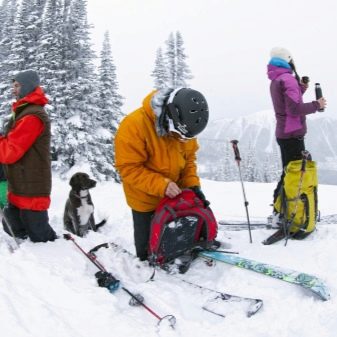
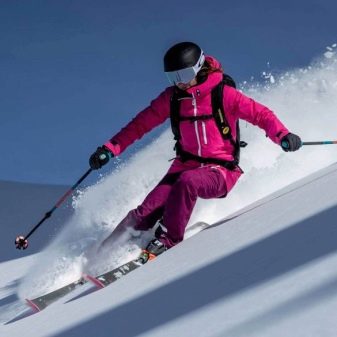
Trails
Mass segment, middle price group. Usually, this type of jacket externally tries to imitate the others while keeping the price affordable. Suitable for those who still skate infrequently, but do not mind changing this.
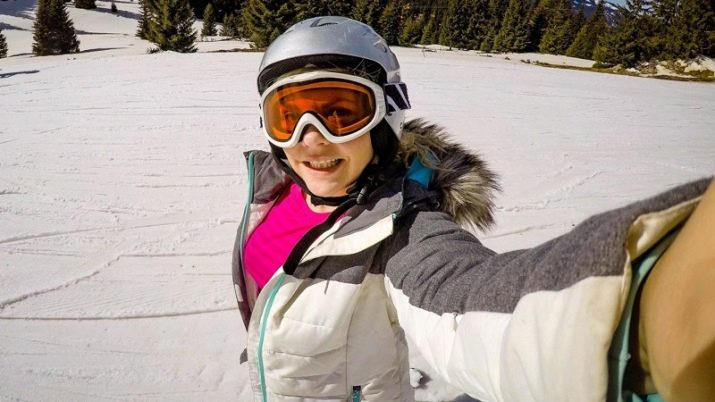
Glamor
Models for those who care about jacket design. Fur, all kinds of belts, original colors, styles - all this is about this category. At the same time, such jackets are often made of technologically advanced materials, can have excellent thermoregulation, and all decorative elements, if necessary and in the name of functionality, can be unfastened.
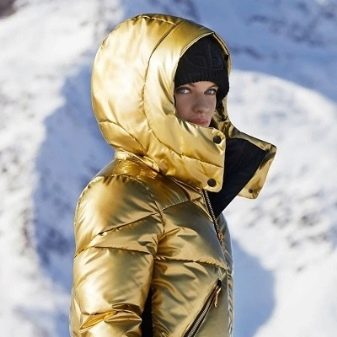
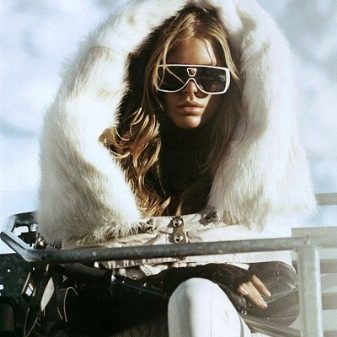
Design options
For some, the design of sportswear is unimportant, but why not combine aesthetics and functionality, because for this it is not necessary to overload the jacket with decorative details that can interfere with the descent.
Correctly selected silhouette, several cute to heart and eye stripes, an interesting print or simply pleasing colors - your suit for skiing or snowboarding can easily be not only comfortable, but also beautiful.
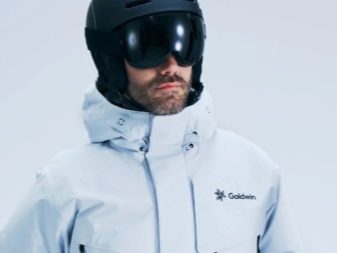
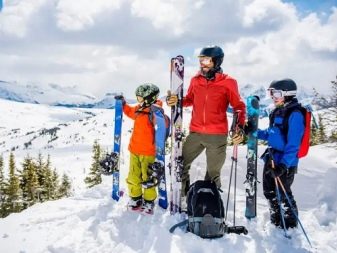
Colour
Yellow, red, purple, green, neon pink - the jacket can be of almost any color. The only unwanted color on the slope is white. The thing is, pure white skier clothing will be harder to find in an emergency.
It is better to give preference to models with bright elements. Let the classic white and black, if you still want something calm, be diluted with orange or bright blue. This is not only a matter of style, but also of safety.
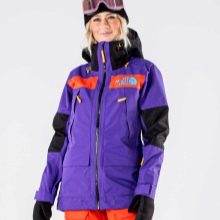

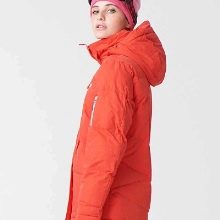
Geometric, abstract or even animal - it all depends on the designer's imagination and your preferences. Don't just use winter camouflage.
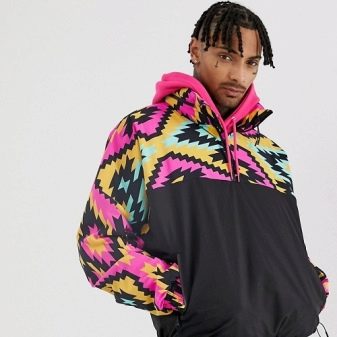
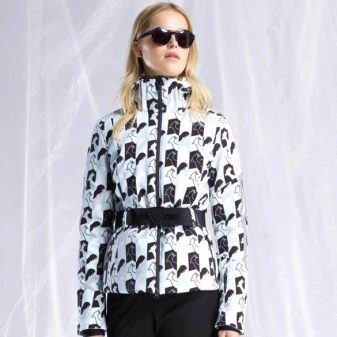
Top brands
We decided what characteristics will suit you, decided on the desired color - it's time to choose a brand. Here is a small top of proven manufacturers of clothing for extreme recreation.
Phenix
Average price: 10-30 thousand rubles.
Japanese premium brand founded in the early 50s. Among their assortment, you can choose an option for both a professional man and a girl and a boy who first got up on skis.
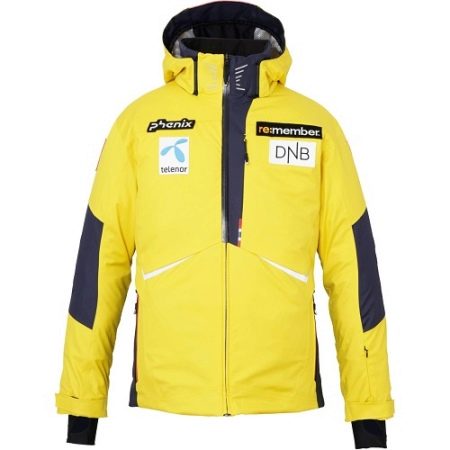
Patagonia
Average price: 15-60 thousand rubles.
Legendary American brand of outerwear. Many models are equipped with the popular Gore-tex membrane, loved not only by skiers, but also by climbers, which provides high water resistance and vapor release.
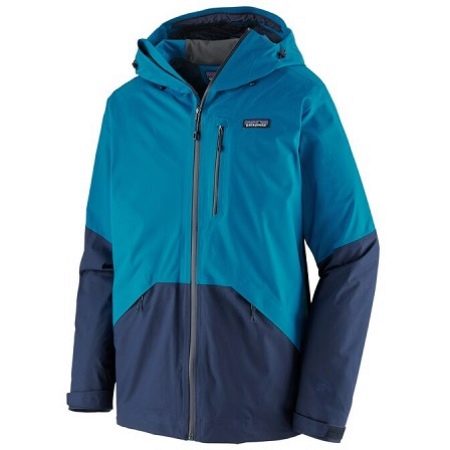
The North Face, Inc.
Average price: 6-50 thousand rubles.
A brand that guarantees protection and comfort even in extreme conditions, loved by many professionals for this. The wide price range is another advantage. In addition to ski equipment, it produces clothing and equipment for climbers and tourists.
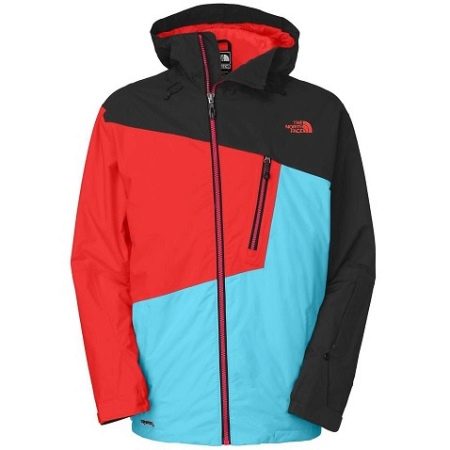
Columbia Sportswear
Average price: 7-25 thousand rubles.
Probably the most famous brand on the list for a person far from sports. Still - Columbia has been producing clothing since 1937.Discreet but pleasant design, wide range of models, high-quality fabric, affordable price are the main advantages of this option. A good choice for beginners.
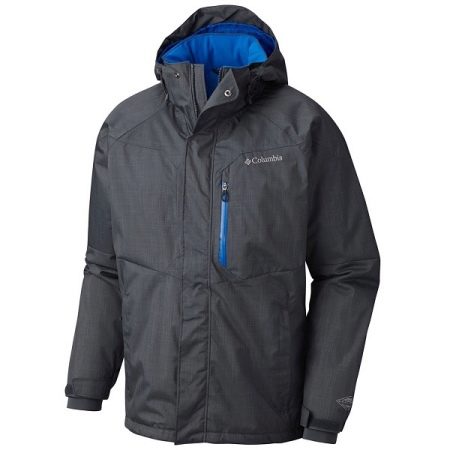
Goldwin
Average price: 15–150 thousand rubles.
Another manufacturer from Japan. High-quality and proven membranes Dermizax, Gore-tex, Gore-tex PRO, etc., fillers from Kodenshi ceramic fibers and natural down are used. "Skirts" have a comfortable elastic base, most models have a detachable fleece collar.
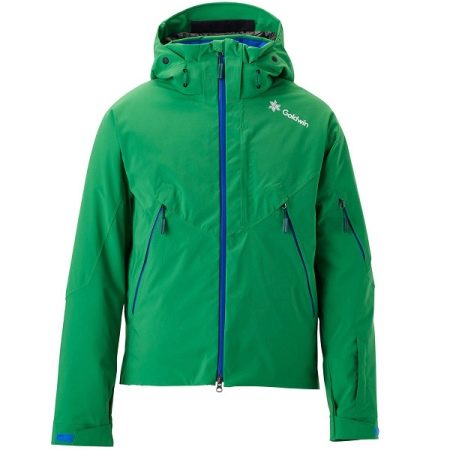
Colmar
Average price: 8-30 thousand rubles.
A brand that is distinguished by a variety of designs of produced jackets: from calm models to bright, neon ones. There are lines for ski enthusiasts with varying skill levels. The manufacturer guarantees comfort even at low temperatures.
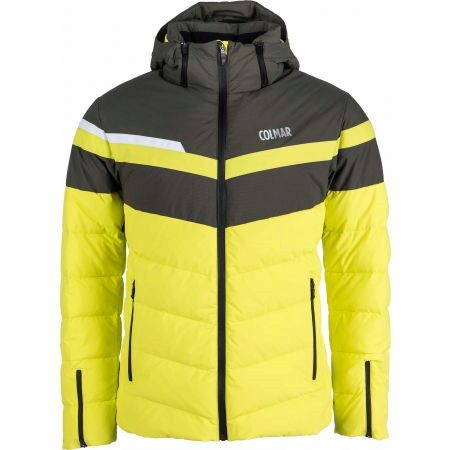
Salomon
Average price: 16-25 thousand rubles.
French brand that produces clothing for alpine skiing, a feature of which is the special structure of the material, providing competent air distribution and a comfortable temperature level.
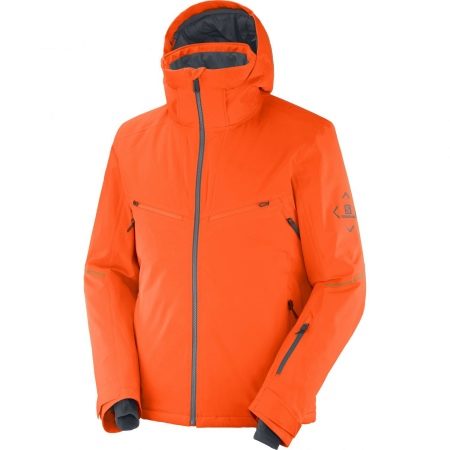
Volkl
Average price: 5-30 thousand rubles.
German manufacturer of clothing for amateur skiers. Volkl jackets are affordable and functional at the same time. A wide selection of prints and colors.
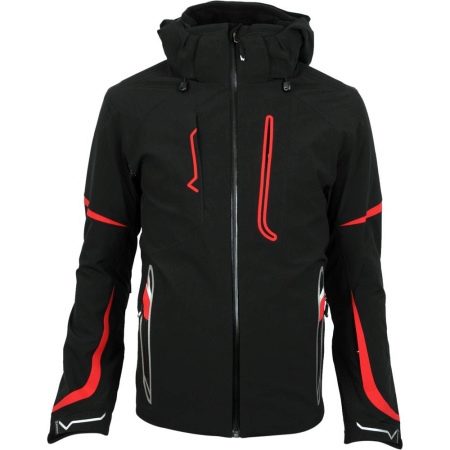
Descente
Average price: 15–80 thousand rubles.
Comfortable clothes for riding in any weather, in the production of which all anatomical features are taken into account. Bright colors, high technology and maximum functionality. One of the most popular brands among athletes. Distinctive features: comfortable hood adjustment system and patented technology that prevents snow from entering the hood, Dermizax membrane, laser cut, combined ventilation system.

Spyder
Average price: 20–100 thousand rubles.
An American brand, in the range of which you can choose a warm and comfortable jacket for every taste and wallet. One of the favorite brands of professional skiers for decades. But this does not mean at all that these clothes are only for professionals. The Spyder has models to suit the beginner's needs as well.
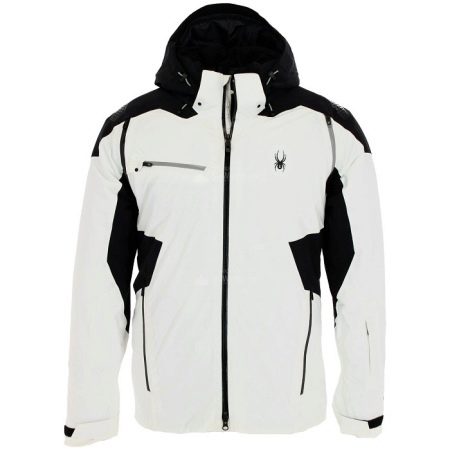
Nuances of choice
So, we went through all the main parameters that must be taken into account when choosing a jacket for alpine skiing, looked at the rating of trusted manufacturers. Now let's figure out how to choose the jacket that is right for you. Focus on your current fitness level and riding style. The level will rise - change your equipment. A beginner does not have to take a model with a Gore-tex membrane for 60 thousand rubles - a fairly high-quality universal jacket.
Think about when and where you plan to ride, what temperature the jacket should be rated for. Do you need a warmed version or even a softshell is enough.
Fitting is a must! The jacket should fit correctly, not constrain movement, and not be too long. Moreover, it is advisable to measure the jacket on the clothes in which you plan to ride.

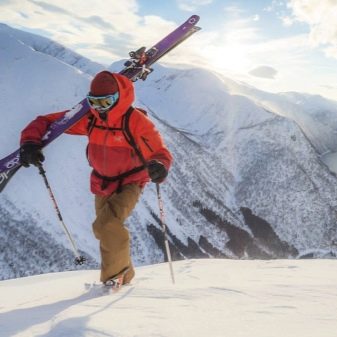
Essential elements for a comfortable ride:
- membrane;
- taped seams;
- reliable hood;
- smooth stroke of lightning;
- reflective stripes;
- snow-protective skirt.

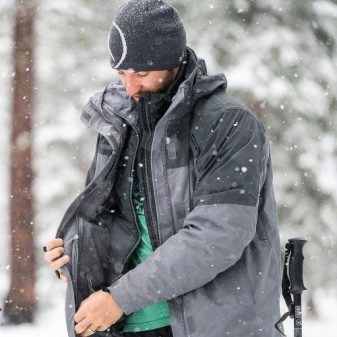
Optional but desirable details:
- ventilation;
- strengthening in the shoulder area;
- fleece trim on the inside of the collar;
- valves with zippers and pockets;
- an abundance of pockets;
- adjusting laces or straps to fit;
- elasticated cuffs.
This small checklist should be memorized or printed out and taken with you to the store, so as not to get confused by the abundance of options and choose the most suitable and meeting all the requirements.
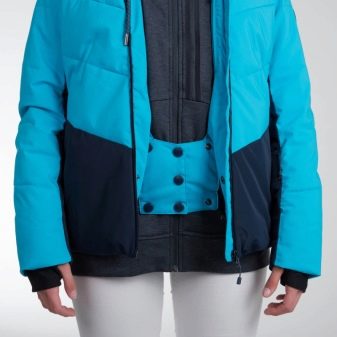
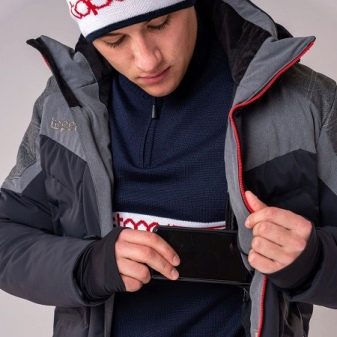
What to wear with?
It is clear that on the slope there is no time to create kits. There the company of the ski jacket is made up of special trousers or overalls, fleece, thermal underwear. But there are other cases as well. Many people like the very look of ski jackets, but skiing is not included in their plans. The main thing in this case is not to buy a special freeride jacket for everyday wear. Ski clothing is designed to be moved in it.On a regular walk, wearing such clothes will quickly become uncomfortable. Fortunately, now it is not a problem to find an ordinary jacket, outwardly as similar as possible to a ski jacket. Or, if you still want a sporty product, take a universal option.
What to wear with such a jacket? On the catwalks, designers combine sports items with elements that are not associated with sports at all: heels, massive jewelry, formal trousers. At the same time, the jacket should not be bright, as on the slope, but calm, everyday colors. It looks interesting and pretty bold.
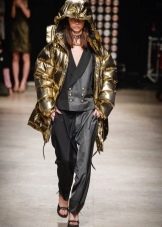
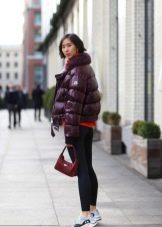
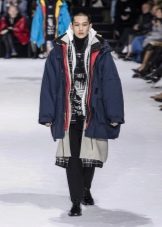
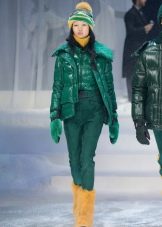
Care Tips
Having bought a high-quality ski jacket, it is important not to puncture yourself with caring for it - improper washing can simply ruin the product. Let's list the basic rules.
- If you have chosen a membrane fabric, then you can wash the jacket only with special (suitable for things with a membrane) means, otherwise the jacket may lose its protective properties.
- Do not iron clothing made of membrane fabric.
- Drying in a washing machine is not recommended. It is better to let the jacket dry on a hanger, but never on a radiator.
- After washing and drying, the jacket needs to be treated with a special water-repellent impregnation.
- If you are not sure that you can wash your jacket in compliance with all the required subtleties, it is better to contact a dry cleaner. It will be cheaper than buying new equipment instead of damaged ones.
Now you know what ski jackets are, how to choose the one that suits you specifically, and how to ensure it has a long, decent service. Be careful when choosing - and you will be assured of a successful vacation.
